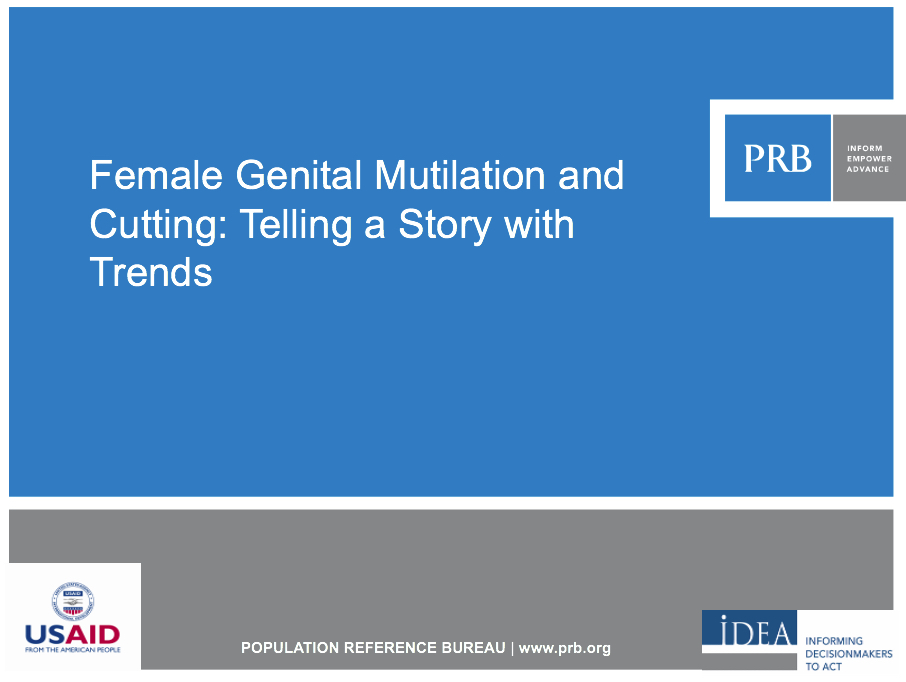PRB Discuss Online: Combating Malaria, What More Can We Do Now?
(2008) Encouraging progress against malaria was made in the Americas and some parts of Asia in the last century, but the first global campaign to stop malaria didn't succeed.
(2008) Encouraging progress against malaria was made in the Americas and some parts of Asia in the last century, but the first global campaign to stop malaria didn't succeed.

(2011) Drawing on PRB's data sheet Female Genital Mutilation/Cutting: Data and Trends, 2010 Update, this PowerPoint presentation is designed to bring attention to and present accurate data on this practice that affects millions of women and young girls worldwide.

Project: PACE: Policy, Advocacy, and Communication Enhanced for Population and Reproductive Health
PRB has developed seminal resources to support decisionmakers on measures to enhance contraceptive continuation for women who want to avoid pregnancy.
(2010) The relationship between HIV/AIDS and the natural environment is complex and operates at many levels in countless ways. HIV/AIDS morbidity and mortality may affect people's use of natural resources and the institutions that govern resources, while environmental change may affect people living with HIV/AIDS and increase susceptibility to illness and even HIV infection among certain groups, especially women and girls.

Project: Center for Public Information on Population Research (CPIPR)
A conversation with author Jessica Calarco on her new book, Holding It Together